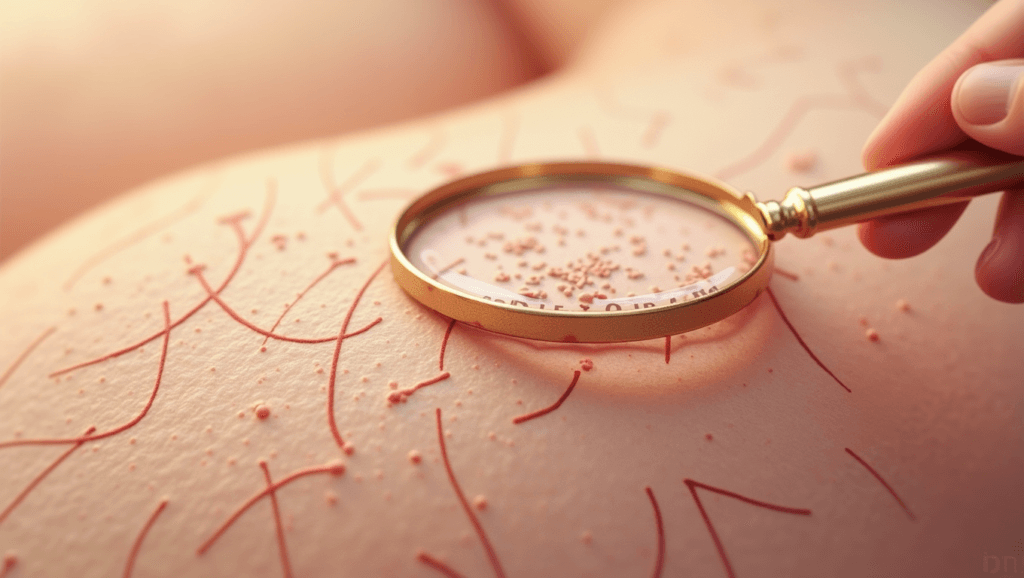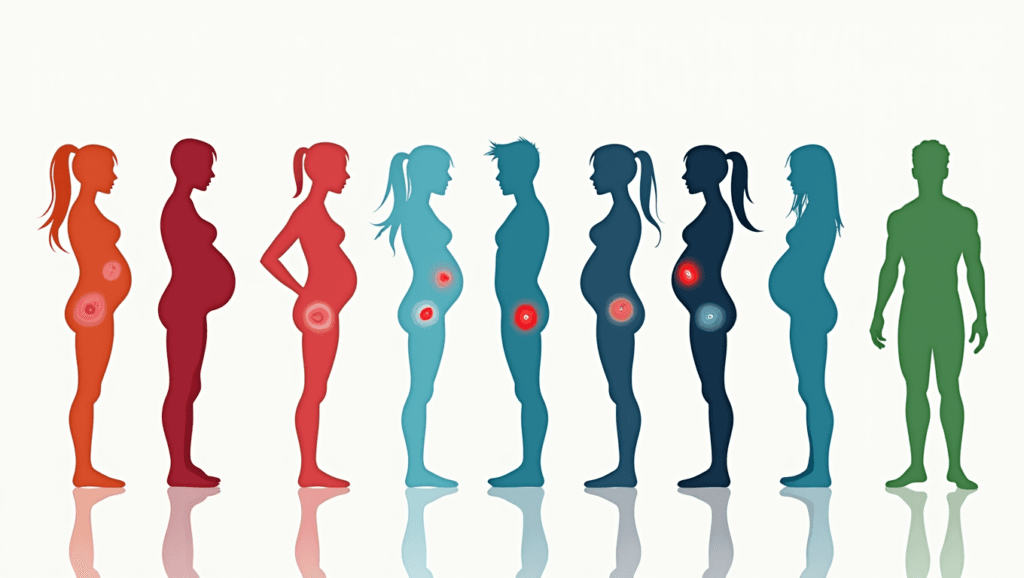Are Your Stretch Marks Genetic? Here’s How to Tell
Ever wonder why some people do and some don’t get stretch marks?
It’s a classic question, one rife with myth and misunderstanding.
In this post, I will clarify the facts and myths regarding stretch marks genetics.
You’ll learn how to treat and prevent them,
and discover whether your genes contribute to these skin streaks.
So here, let’s get into the science of stretch marks and what you really can do about them!

Introduction
Stretch marks are a commonly experienced skin condition for almost everyone in their lifetime. These dermal hills and valleys are often visible on the surface of skin during times of significant growth or body size change. The formation of stretch marks is complex, yet there is increasing interest in whether genetics may play a role. We will explore how genetics affects stretch marks. We will provide important information about this interesting topic.
What are Stretch Marks?
Description and Definition
Stretch marks, also known as striae, are long, thin lines that appear on the skin. They happen when skin stretches rapidly, causing the collagen and elastin fibers to rupture. At first, these marks can look like red or purple lines, but they will eventually fade to a silvery white color.
Common Areas Affected
Stretch marks may appear in different areas of the body, including:
- Abdomen
- Breasts
- Hips
- Buttocks
- Thighs
- Upper arms
Causes of Stretch Marks

Skin Stretching Factors
Stretch marks happen when the skin stretches rapidly. This can occur for several reasons:
- Pregnancy
- Rapid weight gain or loss
- Puberty – Growth spurts
- Muscle building
Role of Hormones
Hormones are an important factor in the formation of stretch marks. Cortisol is a hormone made by the adrenal glands. It can harm the elastic fibers in the skin. Hormonal changes during pregnancy can also make stretch marks more likely.
Genetic Factors
Why Genetic Predisposition?
Studies indicate genetics may have something to do with whether someone has stretch marks — if your mom had them, you may be more likely to have them too. Some people may have genes that make their skin more elastic and better at repairing itself. This can make their skin more prone to stretching.
Studies Suggesting Genetic Influences
The genetic connection to stretch marks has been explored in multiple studies:
- This 2013 study in the Journal of Investigative Dermatology found that genetic indicators of stretch mark formation, of which there were four, could be identified.
- Studies have suggested that a family history of stretch marks increases the chances of developing them.
“Although genetics don’t play a 100 percent role, they can affect your skin’s tendency to get stretch marks.”
Other Contributing Factors
Pregnancy
Pregnancy is one of the main causes of stretch marks. As the baby grows, the skin has to stretch to make room for the growing uterus, and this often leads to stretch marks on the abdomen, breasts and hips.
Weight Gain or Loss
Stretch marks can occur when your weight changes quickly. It is particularly common in people who lose weight after gaining a lot of it.
Adolescent Growth Spurts
Puberty signals a period of significant body growth and can stretch skin faster than it can adjust itself. During this time many adolescents will also develop stretch marks particularly on the thighs, hips and back which is why.
Prevention and Management

Tips for Prevention
Stretch marks can’t always be prevented, but there are some things you can do to help lessen your chances of getting them:
- Maintain a healthy weight
- Stay hydrated
- Follow a healthy diet that is high in vitamins C and E, zinc, and silica
- Use moisturizers to keep the skin hydrated and elastic
Common Treatments and Their Effectiveness
There are several treatments available for treating stretch marks, although their effectiveness can be variable:
- Topical creams and oils
- Laser therapy
- Microdermabrasion
- Chemical peels
Keep in mind that this treatment may make stretch marks look better, but it rarely removes them completely.
Conclusion
Finally, to summarize, genetics factors into the development of stretch marks, among other causes. Individual genetic factors can also affect skin elasticity and its ability to stretch, which may increase your susceptibility to developing stretch marks. But genetics are only part of the story. Other factors that may have a significant role in the development of stretchmarks are pregnancy, weight changes, and growth spurts.
If you’re worried about stretch marks, or believe they run in your family, it’s always best to speak to your health provider or dermatologist. They can also advise you tailored to your specific situation and family health history, which will help you know your skin and find the right prevention or treatment approach.


